Safa and Marwa
Safa and Marwa (Arabic: ٱلصَّفَا وَٱلْمَرْوَة, romanized: Aṣ-Ṣafā wal-Marwah) are two small hills now located in the Great Mosque of Mecca, in the Hejazi region of Saudi Arabia. Muslims travel back and forth between them seven times, during the ritual pilgrimages of Ḥajj and ʿUmrah.
| Safa and Marwah | |
|---|---|
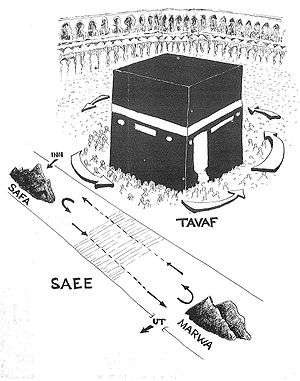 Path of movement between Safa and Marwa, illustrated alongside the circumambulation of the Ka'bah | |
| Highest point | |
| Coordinates | |
| Naming | |
| Native name | ٱلصَّفَا وَٱلْمَرْوَة (Arabic) |
| Geography | |
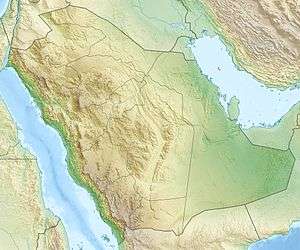 Safa and Marwah Location in Saudi Arabia 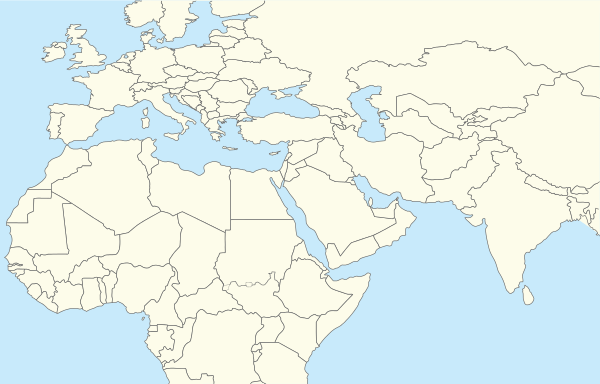 Safa and Marwah Safa and Marwah (Middle East) 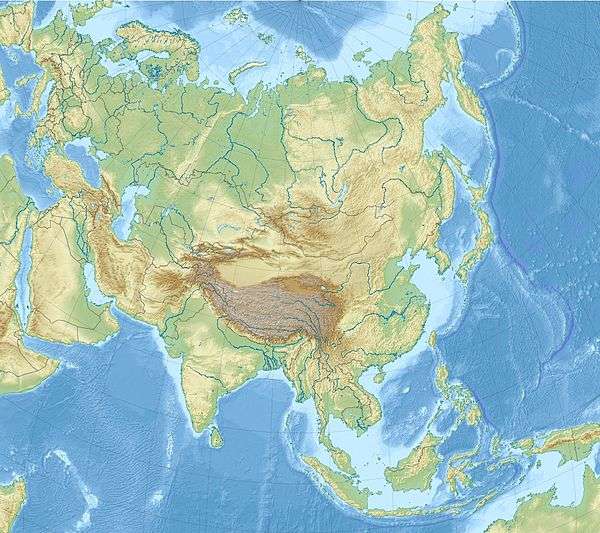 Safa and Marwah Safa and Marwah (Asia) | |
| Country | Saudi Arabia |
| Parent range | Hijaz Mountains |
Location
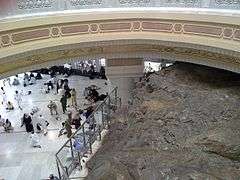
The Great Mosque houses the Kaaba, the focal point of prayer for all Muslims. Safa—from which the ritual walking or Sa'i begins—and Marwa are located approximately 100 m (330 ft) and 350 m (1,150 ft) from the Ka'bah respectively. The distance between Safa and Marwa is approximately 450 m (1,480 ft), so that seven trips back and forth amount to roughly 3.2 km (2.0 mi). The two points and the path between them are now inside a long gallery that forms part of the mosque.
Islamic tradition
In Arab and Islamic tradition, the civilization of Mecca started after Ibrāhīm (Abraham) brought his son Ismāʿīl (Ishmael) and wife Hājar (Hagar) here,[1][2] in the area of Safa and Marwa, and was commanded by God to leave them here. When their provisions were exhausted, Hagar went in search of help or water. To make her search easier and faster, she went alone, leaving the infant on the ground. She first climbed the nearest hill, Safa, to look over the surrounding area. When she saw nothing, she then went to the other hill, Marwah, to look around. While Hagar was on either hillside, she was able to see Ishmael and know he was safe. However, when she was in the valley between the hills she was unable to see her son, and would thus run whilst in the valley and walk at a normal pace when on the hillsides. Hagar traveled back and forth between the hills seven times in the scorching heat before returning to her son. When she arrived, she heard a voice revealing that Gabriel was at the location of water. She looked for water by his wing until the water appeared, she took a drink of water and breastfed her son. That place was known as the Zamzam Well.
Sa'i

Performing the Saʿī (Arabic: سَعِي, lit. '"seeking", "search", or "ritual walking"')[3] serves to commemorate Hagar's search for water for her son and God's mercy in answering prayers. The walkway is entirely covered by a gallery and is divided into four one-way lanes, of which the inner two are reserved for the elderly and disabled.
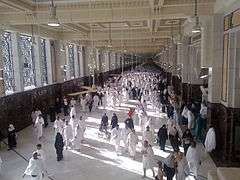 Towards Safa from Marwah
Towards Safa from Marwah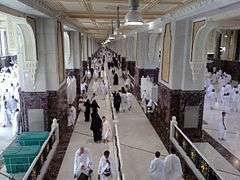 Central section reserved for the elderly and disabled
Central section reserved for the elderly and disabled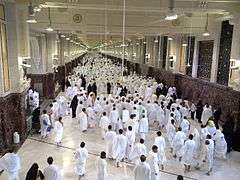 Returning from Safa to Marwa
Returning from Safa to Marwa
See also
References
- Lings, Martin (1983). Muhammad: His Life Based on the Earliest Sources. Islamic Texts Society. ISBN 978-0-946621-33-0.
- Glassé, Cyril (1991). "Kaaba". The Concise Encyclopedia of Islam. HarperSanFrancisco. ISBN 0-0606-3126-0.
- Mohamed, Mamdouh N. (1996). Hajj to Umrah: From A to Z. Amana Publications. ISBN 0-915957-54-X.
External links
| Wikimedia Commons has media related to Sa'yee. |
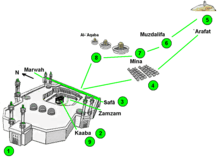
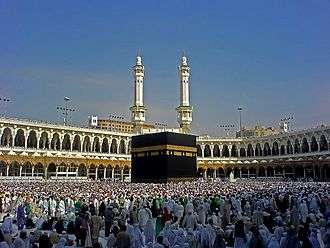
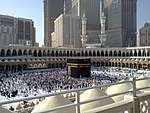

.jpg)


